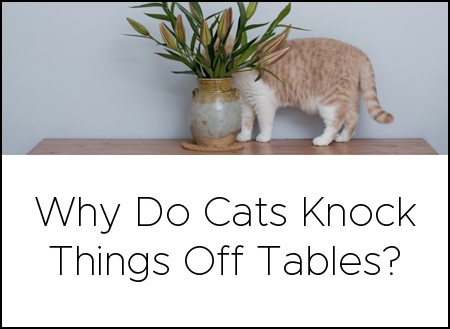Fleas: a nuisance and ick factor rolled into one bouncing, biting body the size of a flake of dandruff, multiplied to infest your furry loved one and home alike. This pest is usually associated with springtime and early summer, but pet owners don’t realize there’s often a resurgence of flea outbreaks in late summer and early fall. Furthermore, many cat parents with indoor-only cats mistakenly believe they’ll never have to deal with these pesky intruders. So, let’s brush up on prevention and flea treatment for cats!
Even if your cat is indoor-only, you’re at risk
Why? Because fleas can travel inside your home in other ways, the most obvious of which is with a family dog. But dogs and cats aren’t the only animals that fleas feast on—they’ll find a home on squirrels, chipmunks, and other creatures running around your yard and bushes. That means a stray flea could ostensibly leap from the squirrel that just streaked past your foot and attach itself to your pant leg as you walk in the door.
One flea is all it takes: An adult female can lay up to 50 eggs per day and 400-500 eggs in their 100-day lifespan. It’s said that in as little as three weeks, a single flea can multiply into 1,000 fleas on your cat and in your home.
Please excuse us while we shudder profusely.
Early signs of a flea outbreak
Because fleas are so tiny, actually spotting one on your cat is probably the least likely method of discovering an outbreak. Instead, you’ll want to take heed if you notice your cat excessively scratching himself, particularly around the ears and neck. You may also notice that he’s grooming himself more frantically than usual, even chewing at times. In fact, he may seem agitated and restless in general, shaking his head and twitching his ears.
Another disturbing early sign of fleas: blood. One flea can bite up to 400 times per day. You may spot little pinpricks of blood on a light-colored surface frequented by your cat—this is from fleas feasting on the poor kitty’s paw pads.
For confirmation, you’ll want to inspect your cat closely. Fleas are 1/16-1/8-inch flat-bodied insects that are dark brown, almost black in color. The more blood they ingest, the lighter in color they may appear. PetMD suggests checking for the following:
- Turn your cat on his back and check areas that allow fleas to hide. The armpits and groin are two areas that are warm and protected, so they’re favored spots for fleas to hide out.
- Check your cat’s ears carefully for signs of scratching, redness, blood, or dirt. These can all be signs of fleas.
- The skin on the belly, groin, or base of the tail may appear red and bumpy, especially if your cat is doing a lot of scratching.
- Hair loss may occur in certain areas that are being scratched excessively, and there may be black spots on the skin along with scabbing.
Prevention and flea treatment for cats
Preventing fleas and treating fleas are essentially one in the same—it begins with treating your cat with flea-eradicating medication. However, you can’t only treat your cat and expect the pest to disappear. You need to treat your home, as well.
Treating your cat
Topical medicine
Arguably the best flea treatment for cats is a topical medication prescribed by your vet or purchased from a pet store. Topical medications are generally more effective and safer than traditional dusts, shampoos, and sprays. Common brands include Revolution/Stronghold, Frontline Plus, and Advantage. Typically you’ll apply the medication directly onto your cat’s skin every 4-6 weeks, but ask your veterinarian and read the label to be safe.
NOTE: Make sure the medication is specific to cats, not dogs—common canine flea medicines are toxic to cats.
Flea collars
Flea collars have somewhat fallen out of favor since spot-on topicals were developed. You can still opt to use one on your cat, but make sure the collar is not irritating his neck and that there is no choking hazard. Flea collars are not as effective as topicals unless they’re prescription-strength (prescribed by a vet).
Ingestible medicine
Instead of a topical, you can give your cat a pill called Capstar to kill adult fleas, but its effects are not long-lasting. You might also give him a chewable called Comfortis that provides a full month of protection.
Flea combs and dish detergent
Even after medicinally treating your cat, you’ll want to comb him with a fine-toothed metal flea comb from head to tail at least once a day. This will skim off adult fleas and their eggs and ease his itching. Then, dip the comb in a mixture of water and liquid dish detergent to kill the fleas.
Treating your home
Vacuum every day
No, don’t vacuum your cat. We already discussed just how many eggs a single adult female flea can lay. If those eggs aren’t sucked up and disposed of, they will of course eventually hatch and lay more eggs of their own. Vacuum the carpets, cushions, and any fabric your cat comes in contact with that you can’t strip off and wash. Do. This. Every. Day! It’s a pain, but it’s the best way to nip future hatching in the bud. Make sure you dispose of the vacuumed contents in a bag outside.
Wash whatever can be washed in hot water
That includes bedding (yours and your pet’s), blankets, sofa covers, and anything else you can throw in the washing machine in hot water (which will kill the bugs). Do this at least once a week.
Take serious measures
If all else fails, there are more serious measures you can take to eradicate fleas in your home, such as coating all carpets and surfaces with a spray that uses the ingredient methoprene or pyriproxyfen. (Make sure all family members and pets are out of the house when you do this.)
It’s important to treat fleas as quickly and thoroughly as possible—not only because you don’t want them to keep resurfacing on your pets, but because they can spread other diseases like tapeworm and anemia. Keep this knowledge about prevention and flea treatment for cats handy! Someday your pet—and your home—will thank you for paying attention.
Recommended








